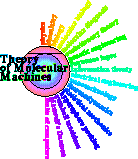
Schneider Lab
origin: 2000 Nov 15
updated: 2008 Apr 07
Peter K. Rogan, Ph.D. Department of Biochemistry, MSB 389 Schulich School of Medicine and Dentistry University of Western Ontario London, Ontario N6A 5C1 Canada progan@uwo.ca O: (519) 661-4255 www.cytognomix.org
Harris defined a polymorphism in the 1960's as a variant that is present in more than 1% percent of the population (reference, possibly: 1 , 2 ) . His assumption, based on population genetic arguments - that are still valid, was that variants present at a higher frequency, would not be subject to selection. Unfortunately, linkage disequilibrium, which can artificially inflate the population frequency of deleterious variants, had not been appreciated then to the extent that it is today. This has led to much confusion over the years, and increasing controversy. For example the IVS8-5T allele in CFTR is present in 5% of the population, but now that it has been shown to be deleterious (congenital absence of the vas deferens), and everyone accepts that it is a mutation. Part of the problem, in my opinion, is that, we, geneticists, have not appreciated that mutations can be leaky and polymorphisms can be partially functional. Rich Spritz has described, for example, a missense polymorphism in the tyrosinase gene that only has a phenotype when the other allele is null, but not when the other allele has partial function (Fukai K, Holmes SA, Lucchese NJ, Siu VM, Weleber RG, Schnur RE, Spritz RA. Autosomal recessive ocular albinism associated with a functionally significant tyrosinase gene polymorphism. Nat Genet. 1995 Jan;9(1):92-95). So we need a definition that encompasses the continuum between polymorphisms and mutations, rather than an arbitrary one. This will be difficult, but not impossible. For the present, I prefer the functional definition that Tom suggested, since it reflects current use of the terms: polymorphism and mutation.
![]()

Schneider Lab
origin: 2000 Nov 15
updated: 2008 Apr 07
![]()